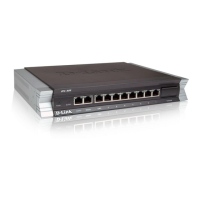List of Figures
1.1. Packet Flow Schematic Part I ...........................................................................21
1.2. Packet Flow Schematic Part II ..........................................................................22
1.3. Packet Flow Schematic Part III .........................................................................23
1.4. Expanded Apply Rules Logic ............................................................................24
3.1. VLAN Connections ........................................................................................92
3.2. Simplified NetDefendOS Traffic Flow ............................................................. 111
4.1. A Typical Routing Scenario ........................................................................... 133
4.2. Using Local IP Address with an Unbound Network ............................................ 135
4.3. A Route Failover Scenario for ISP Access ......................................................... 140
4.4. The RLB Round Robin Algorithm ................................................................... 152
4.5. The RLB Spillover Algorithm ......................................................................... 152
4.6. A Route Load Balancing Scenario ................................................................... 155
4.7. Virtual Links Example 1 ................................................................................ 160
4.8. Virtual Links Example 2 ................................................................................ 161
4.9. Multicast Forwarding - No Address Translation ................................................. 166
4.10. Multicast Forwarding - Address Translation .................................................... 168
4.11. Multicast Snoop ......................................................................................... 170
4.12. Multicast Proxy .......................................................................................... 170
4.13. Non-transparent Mode Internet Access ........................................................... 181
4.14. Transparent Mode Internet Access .................................................................182
4.15. Transparent Mode Scenario 1 ........................................................................183
4.16. Transparent Mode Scenario 2 ........................................................................185
4.17. An Example BPDU Relaying Scenario ........................................................... 187
6.1. Deploying an ALG ....................................................................................... 207
6.2. HTTP ALG Processing Order ......................................................................... 210
6.3. SMTP ALG Processing Order ......................................................................... 220
6.4. DNSBL SPAM Filtering ................................................................................ 222
6.5. PPTP ALG Usage ........................................................................................ 228
6.6. TLS Termination .......................................................................................... 252
6.7. Dynamic Content Filtering Flow ..................................................................... 259
6.8. IDP Database Updating .................................................................................279
7.1. NAT IP Address Translation .......................................................................... 298
7.2. Anonymizing with NAT ................................................................................ 301
8.1. Normal LDAP Authentication ........................................................................325
8.2. LDAP for PPP with CHAP, MS-CHAPv1 or MS-CHAPv2 ..................................326
9.1. The AH protocol .......................................................................................... 358
9.2. The ESP protocol ......................................................................................... 359
9.3. PPTP Client Usage ....................................................................................... 390
9.4. Certificate Validation Components .................................................................. 393
10.1. Packet Flow of Pipe Rule Set to Pipe .............................................................. 404
10.2. FwdFast Rules Bypass Traffic Shaping ........................................................... 405
10.3. The Eight Pipe Precedences ..........................................................................408
10.4. Minimum and Maximum Pipe Precedence ....................................................... 409
10.5. Traffic grouped per IP address ......................................................................411
10.6. A Basic Traffic Shaping Scenario .................................................................. 414
10.7. IDP Traffic Shaping P2P Scenario ................................................................. 421
10.8. A Server Load Balancing Configuration ..........................................................426
10.9. Connections from Three Clients .................................................................... 428
10.10. Stickiness and Round-Robin ....................................................................... 429
10.11. Stickiness and Connection Rate ................................................................... 429
D.1. The 7 Layers of the OSI Model ......................................................................486
10

